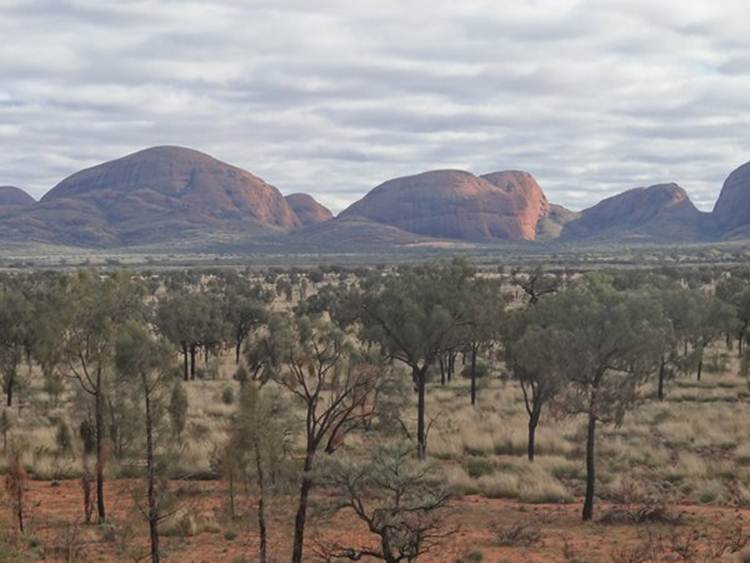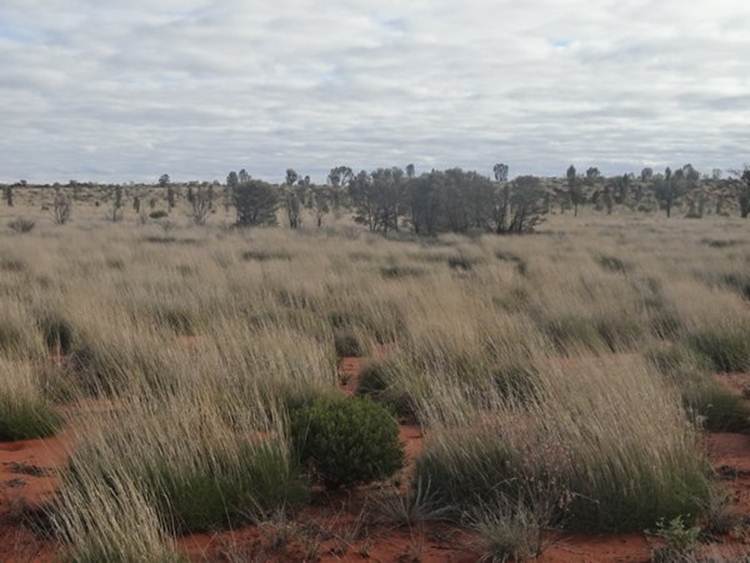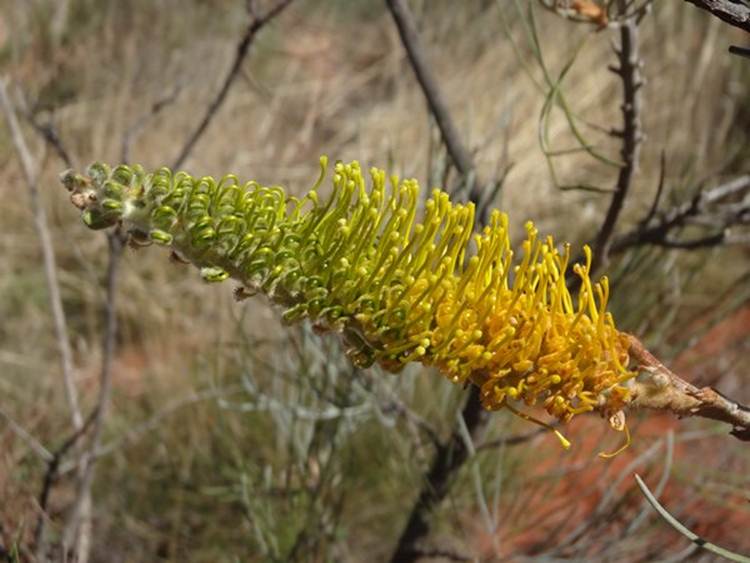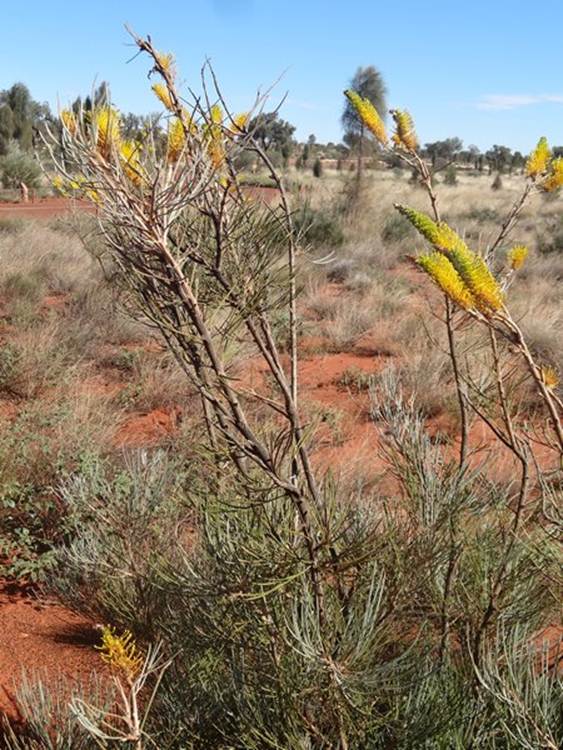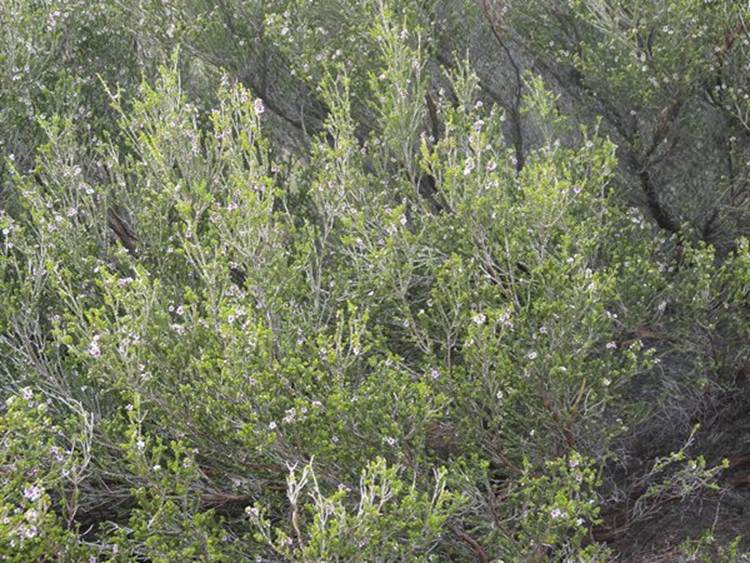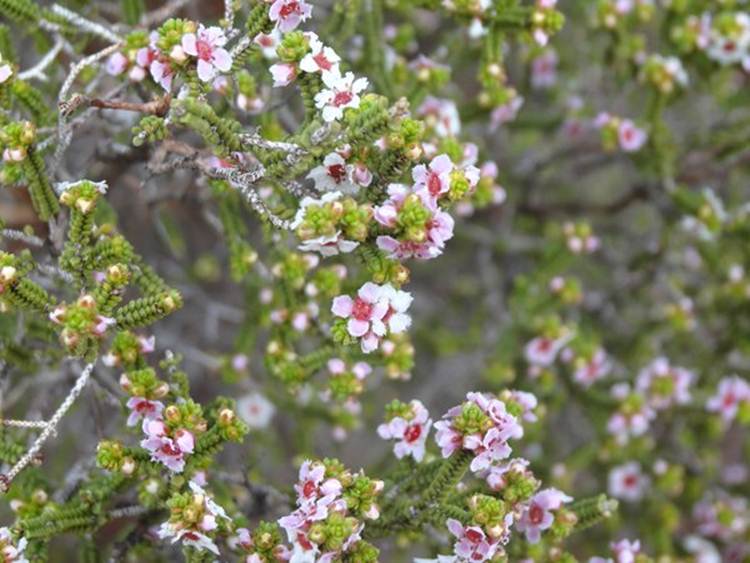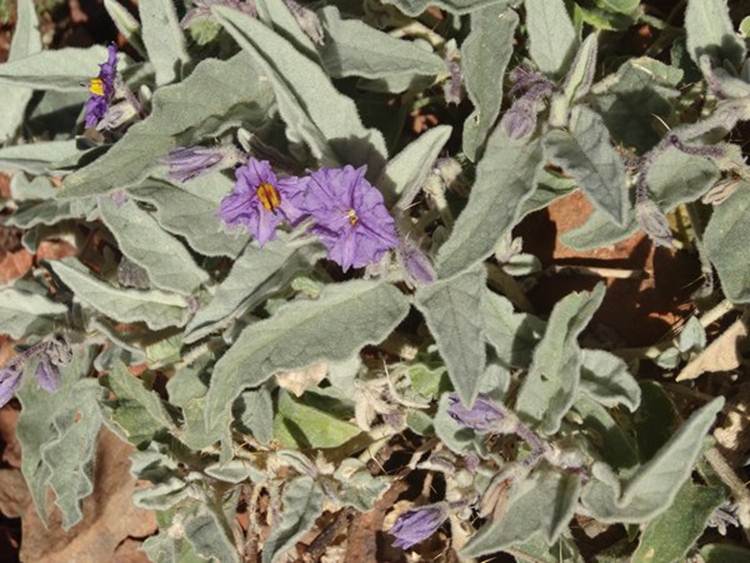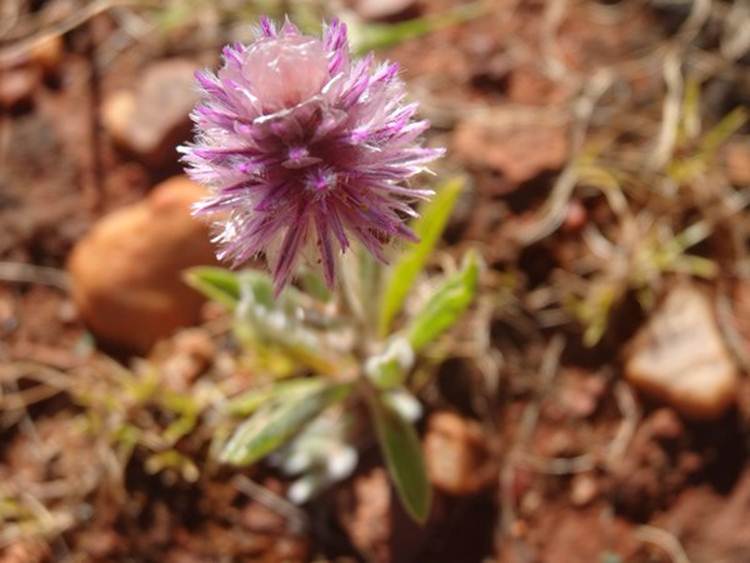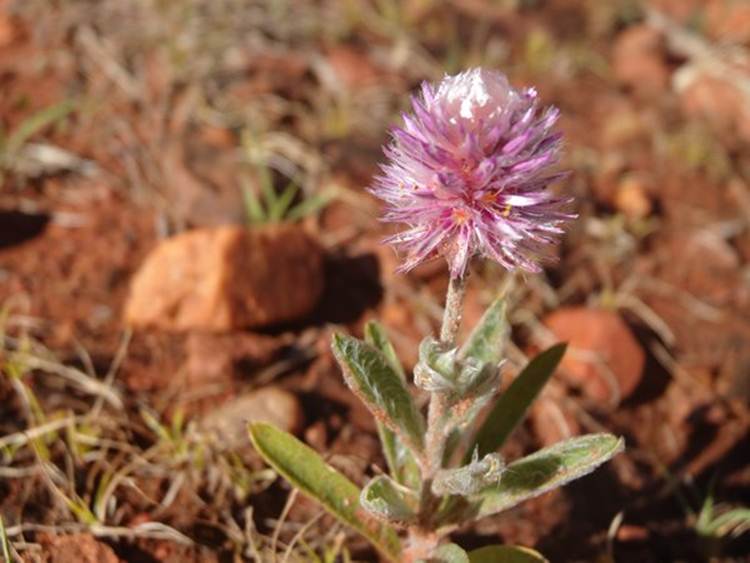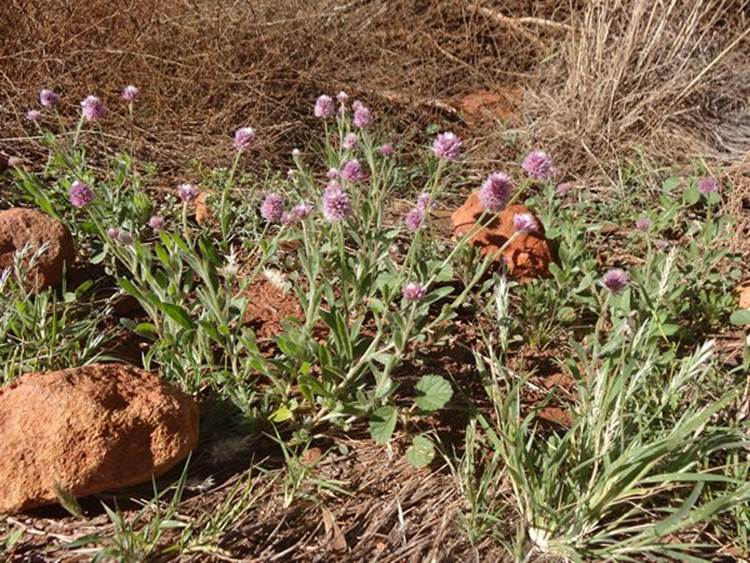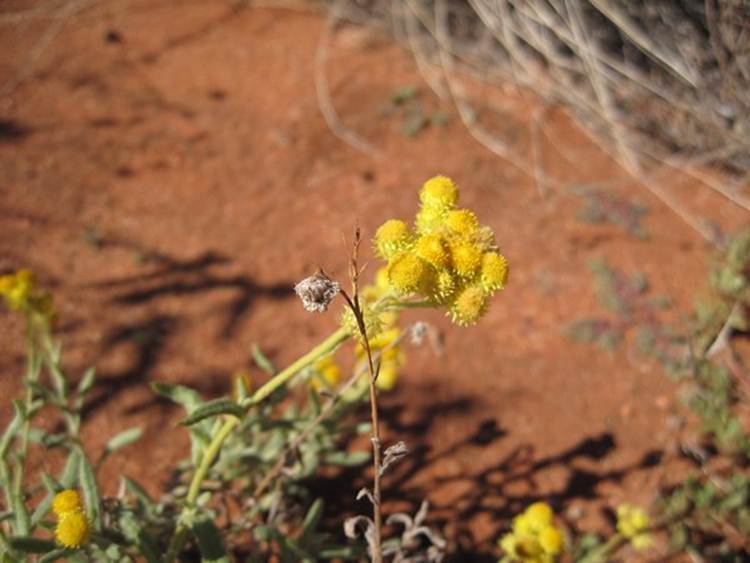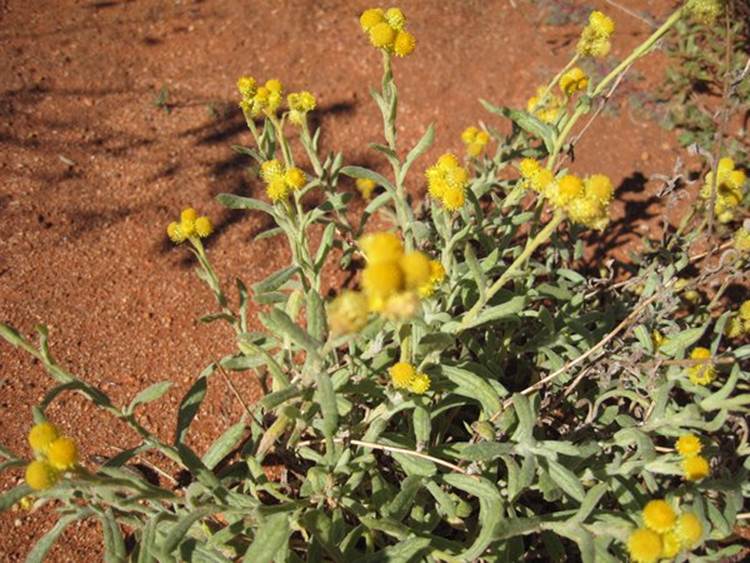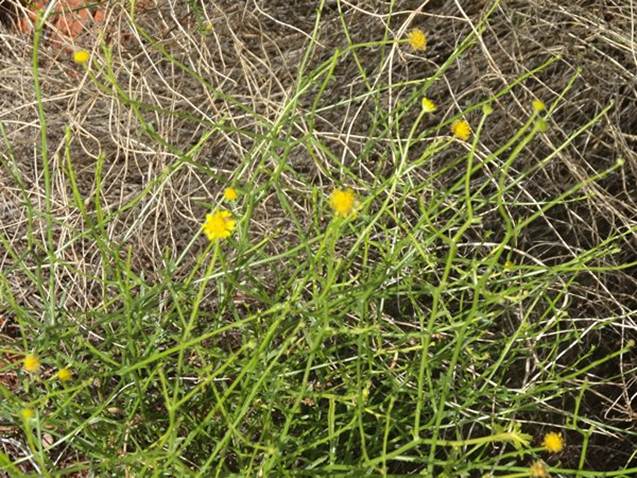Uluru - desert plants

Away from the rocky outcrops the land is red sand. Remember 30,000 years ago area covered in sand. You have three types, well four types, of habitats: the sand plains (dunes and plains) dominated by desert oaks and spinifex; the scrubland growing in the foothills and surrounds of Kata Tjuta and Uluru dominated by mulga; the rocky areas (particularly in Kata Tjuta since Uluru is a virtually bare monolith) and the creek beds within the rocky areas that support more water loving plants like eucalyptus. View over sand plains to Kata Tjuta with desert oaks, surrounded by spinifex, in the foreground.
Spinifex is one of the world’s hardiest grasses. The spiky clumps provide a refuge for numerous small animals. Lizards and snakes shelter in the grass and the spinifex hopping mouse dig their burrows a metre or so below the plant. The long needle-like leaves are also home to grasshoppers, beetles and other insects – believe me there are loads of them. Termites eat the old stems and leaves, chewing them into a fine mulch and depositing them deep underground. In this way valuable nutrients get back into the soil. Spinifex also makes a bitumen like glue. Aboriginal men and women make the superglue together. They beat a white powdery substance from the spinifex stems and then melt it on the end of a stick until it turns into a dark liquid. You can see why they call spinifex porcupine grass in this picture.
There are lot of small bushy types of plants in the sand dune country. This is the honey grevillea (Grevillea eriostachya) which is in flower at the moment.
Doesn’t really show up well in pictures but the landscape is dotted with them. You can suck the nectar out of the flowers or soak the flowers in water to make a sweet cordial.
The desert thryptomene (Aluta maisonneuvei)
Which is also in flower at the moment. Small tightly packed leaves:
Here are some arid region plants in flower at the moment. A nightshade or apple weed (Solanum spp.)
This is a type of mulla mulla flower, possibly pink ot tall mula mulla (Ptilus exaltatus) When you looked there were swaths of these flowers growing on the rocky terrain throughout Kata Tjuta.
Possibly common everlasting (Chrysocephalum apiculatum), a daisy anyway.
Another daisy, possibly golden everlasting or the yellow paper daisy (Xerochrysum bracteeatum).
This is the upside down plant (Leptosema chamersii), the olive green things at the bottom of the plant are its flowers.
|
